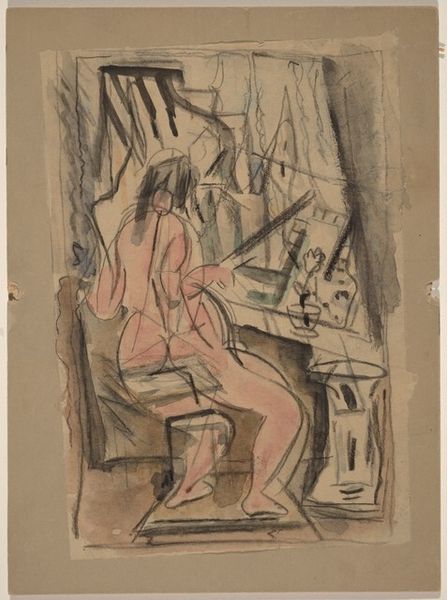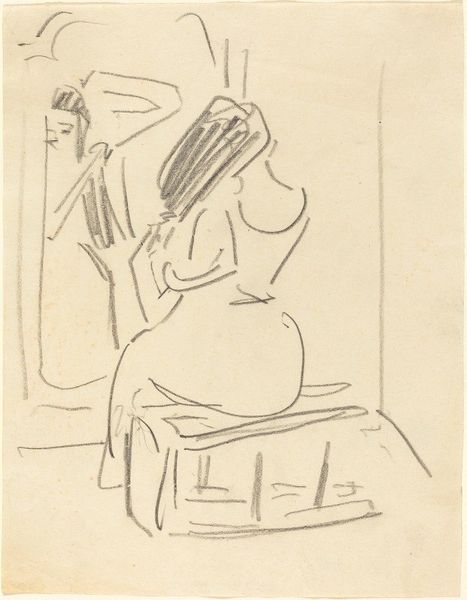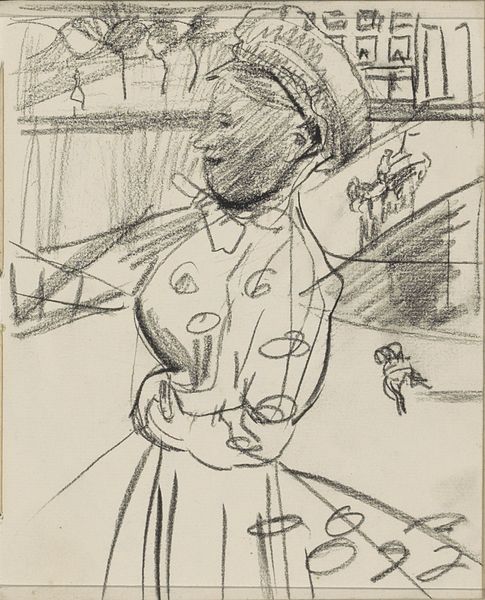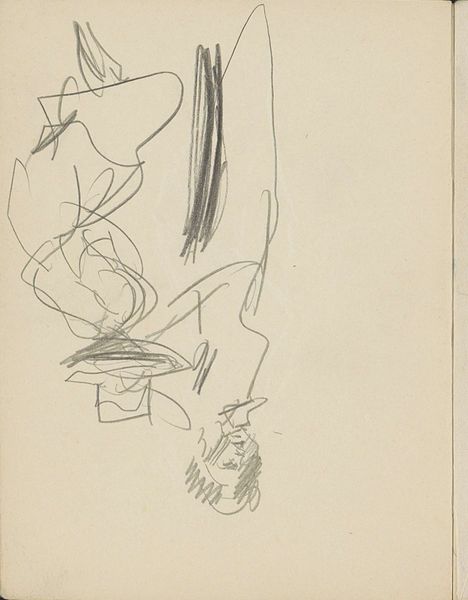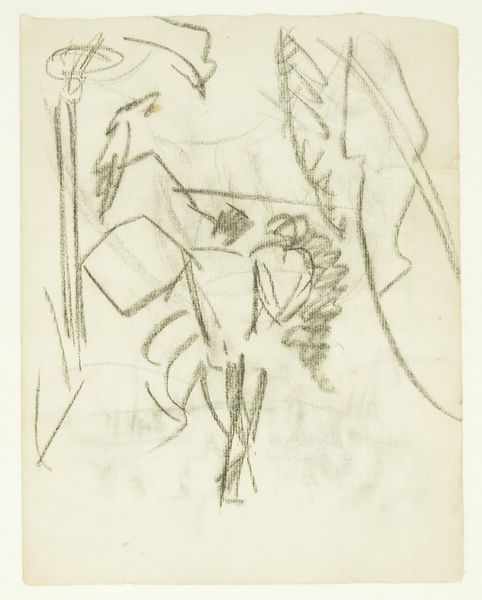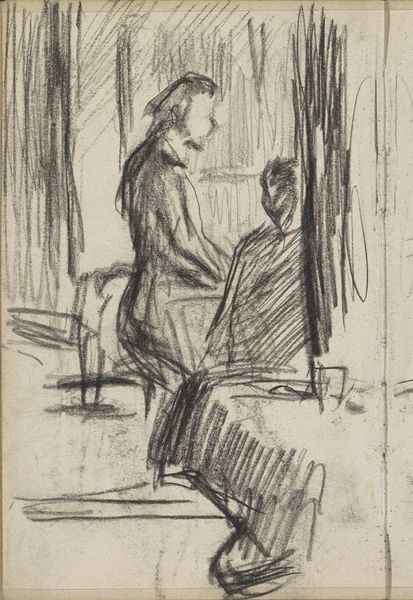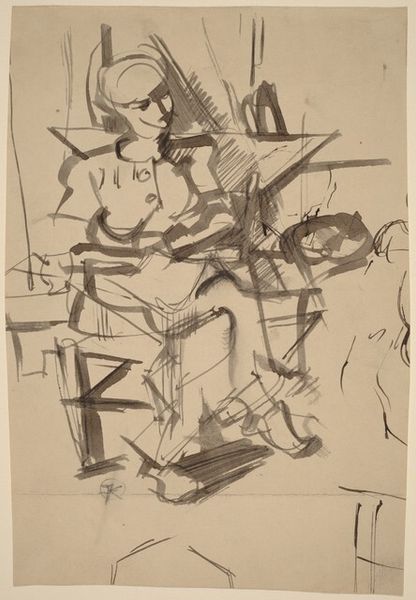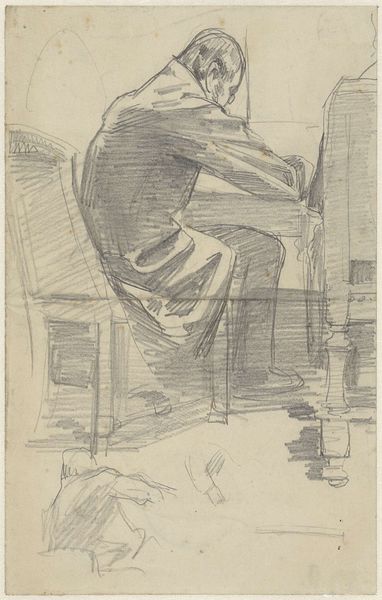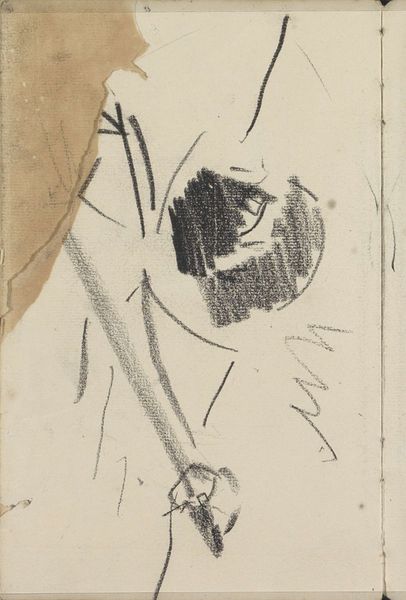
drawing, ink
#
drawing
#
ink drawing
#
figuration
#
ink
#
expressionism
#
nude
#
modernism
Dimensions: plate: 24.6 × 19.7 cm (9 11/16 × 7 3/4 in.) sheet: 30.6 × 25.5 cm (12 1/16 × 10 1/16 in.)
Copyright: National Gallery of Art: CC0 1.0
Editor: Here we have Paul Kleinschmidt's "Woman at a Mirror," created between 1920 and 1921 using ink. It's striking how the rough lines almost feel unfinished, yet they powerfully convey the figure's physicality. What stands out to you? Curator: I see a fascinating document of its time, particularly in relation to gender and labor. Consider the materials themselves: ink, paper, printing press. These were increasingly accessible means of artistic production in the early 20th century. What does this imply about who had the means to produce and consume art? Editor: That's a great point, the relative ease of production suggests wider access, right? Curator: Precisely. And the image itself, a woman in a corset – this garment speaks volumes about the societal expectations placed on women’s bodies. How might the act of depicting this intimate moment be seen as a commentary on the objectification or liberation of women at the time? Notice also how her contorted pose contrasts the reflection. What do you make of this? Editor: Perhaps a commentary on the artificiality of beauty standards? The corset, the reflection - all constructed images? Curator: Exactly! And think about the labor involved in creating and maintaining this image, both for the woman in the corset and for Kleinschmidt in depicting it. Editor: I never considered how the choice of material could itself be a commentary. This has totally changed my perspective. Curator: By analyzing materials, labor, and the social context, we can unpack a whole range of meanings embedded in this single image.
Comments
No comments
Be the first to comment and join the conversation on the ultimate creative platform.
